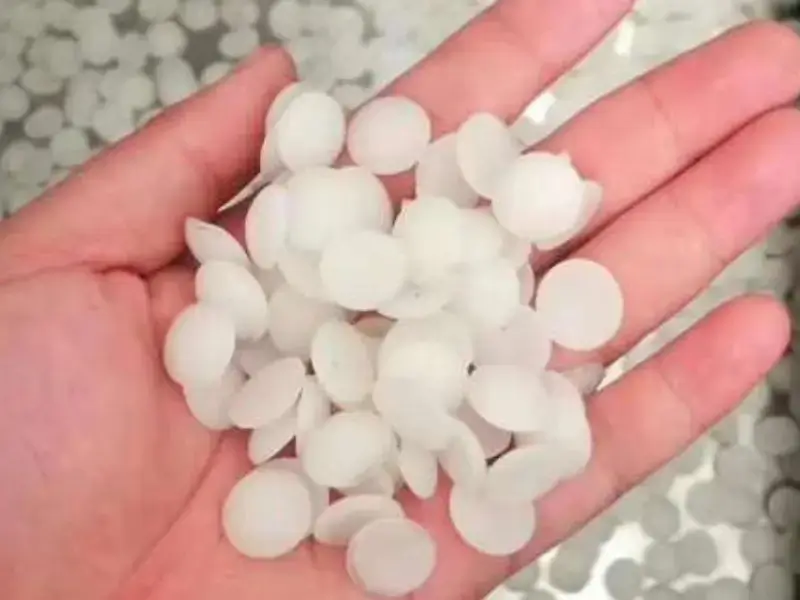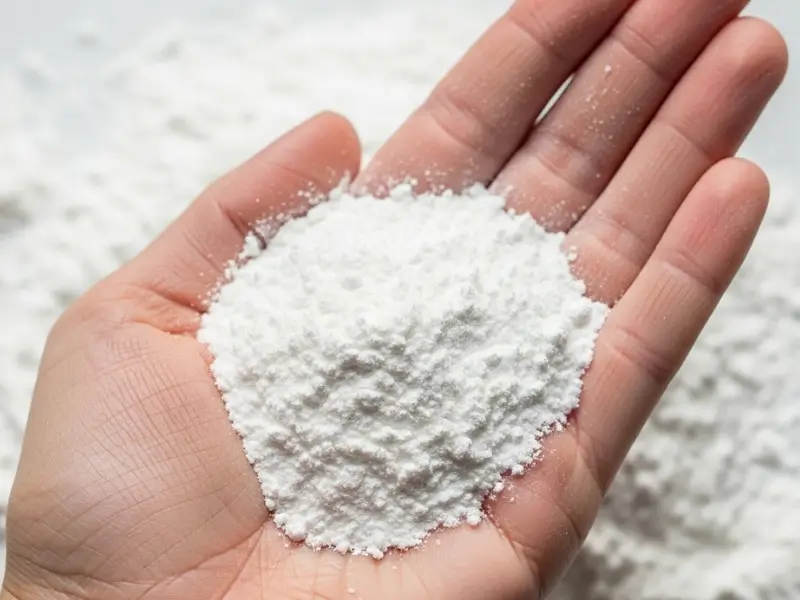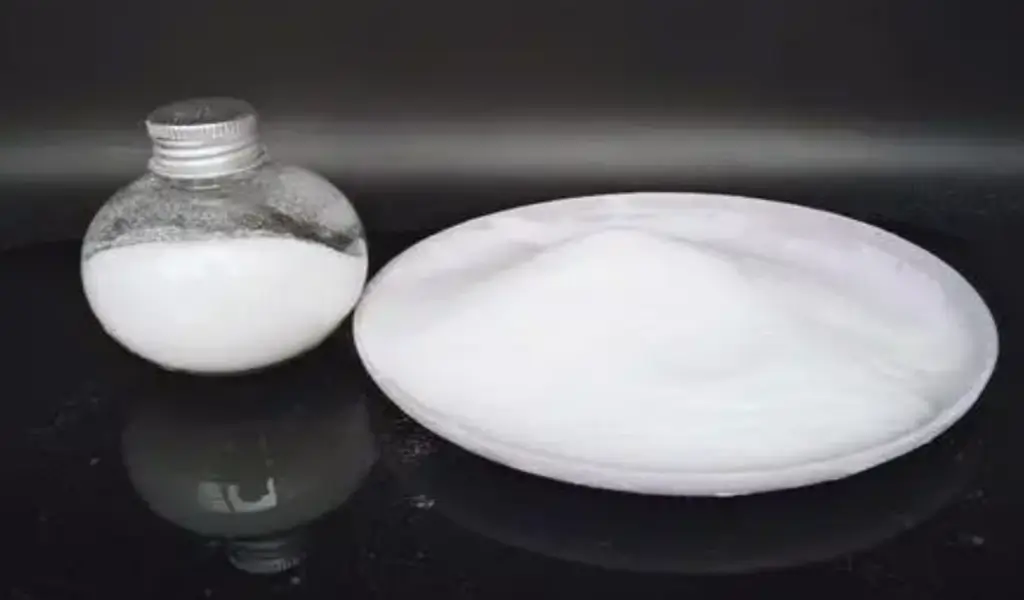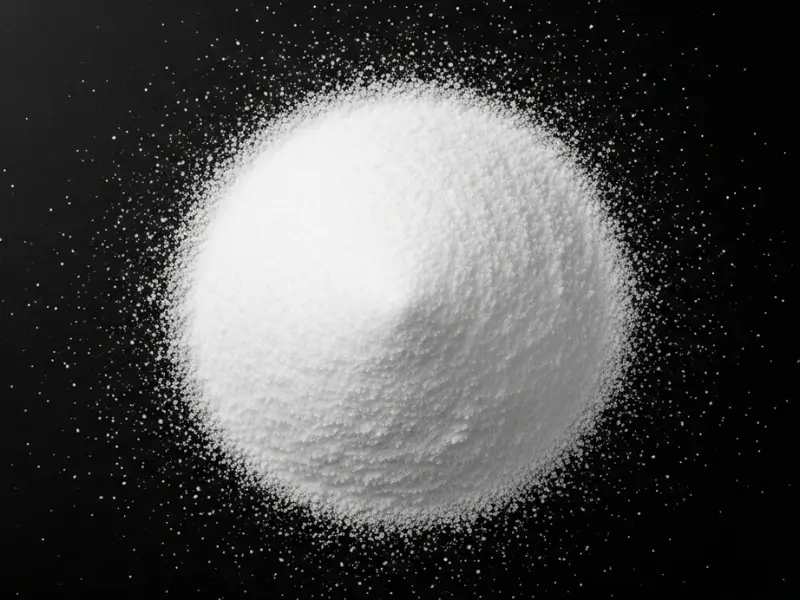The top 6 advantages of CPVC pipes are durability, corrosion resistance, heat tolerance, safety, easy installation, and versatility across plumbing and industrial applications.
1. INTRODUCTION TO CPVC PIPES
CPVC pipes are engineered to withstand high pressure and temperatures, making them an excellent choice for various plumbing needs. What’s the real story? While PVC is a common material used for plumbing, CPVC takes it a step further by undergoing a chlorination process, which enhances its thermal and chemical resistance properties. This makes CPVC pipes suitable for both hot and cold water systems.
The versatility of CPVC pipes is one of their most attractive features. They can be used in a range of applications from residential plumbing to more complex industrial settings. For instance, the thermoplastic is not only lightweight but also relatively easy to install, which can save time and labor costs during installation projects. This inherent efficiency and reliability are why CPVC has become a favored choice among plumbing contractors and builders alike.
Moreover, CPVC pipes are resistant to corrosion and scaling, unlike metal pipes that deteriorate over time. This characteristic ensures a longer lifespan for CPVC installations, reducing the need for frequent maintenance. In fact, statistics show that properly installed CPVC systems can last over 50 years, proving to be a long-term investment.
| Property | Description |
|---|---|
| Material | Chlorinated Polyvinyl Chloride (CPVC) |
| Weight | Lightweight for easier handling |
| Temperature Resistance | Suitable for high and low-temperature applications |
| Corrosion Resistance | Does not rust or corrode |
| Lifespan | Frequently exceeds 50 years |
2. ADVANTAGE 1: CORROSION RESISTANCE
Corrosion is a significant threat to piping systems, often leading to system inefficiencies and increased maintenance costs. But here’s the kicker: CPVC pipes offer remarkable corrosion resistance, setting them apart from traditional metal piping systems. As a thermoplastic, CPVC is inherently resistant to a wide range of chemicals, including acids and bases, making it an ideal choice for various applications, including those in industrial environments.
In comparison to metallic pipes, which can rust and corrode over time, CPVC provides a more dependable solution. A real-world example involves a municipal water installation in Arizona, where CPVC pipes replaced old steel lines that were regularly leaking due to corrosion. The switch not only reduced maintenance costs significantly but improved water quality by eliminating rust particles.
Additionally, studies show that the impact of corrosion can cost industries billions annually. The cost associated with corrosion-related failures—including repairs, replacements, and downtime—can be mitigated with CPVC installations, offering a cost-efficient long-term investment. By preventing corrosion-related issues, businesses can dramatically enhance their operational efficiency.
| Advantage | Explanation |
|---|---|
| Longevity | Reduces the need for replacements |
| Cost Efficiency | Lower maintenance due to minimal corrosion |
| Improved Water Quality | No rust or scale in the water supply |
3. ADVANTAGE 2: HIGH TEMPERATURE TOLERANCE
High temperature tolerance is essential in plumbing systems, particularly where hot water transportation is required. Ready for the good part? CPVC pipes are rated to handle temperatures up to 200 degrees Fahrenheit (93.3 degrees Celsius), making them ideal for hot water applications. This property enhances their versatility compared to PVC, which has a lower temperature threshold.
In homes, CPVC pipes facilitate hot water delivery without compromising safety or performance. For instance, in modern residential installations, CPVC can be found in applications such as water heaters, dishwashers, and HVAC systems, where it efficiently transports heated water without risk of failure.
A notable case study involved a commercial kitchen in Florida. The restaurant initially equipped their facility with PVC piping for its hot water needs. However, frequent leak issues and piping failures led them to switch to CPVC, resulting in a dramatic reduction in maintenance and an overall efficiency boost.
Further illustrating the benefits, a comparative analysis of piping materials for hot water transport revealed that systems utilizing CPVC significantly outperformed those using other materials in terms of reliability and longevity. This emphasizes the critical role that high-temperature tolerance plays in enhancing operational efficiency.
| Temperature Capacity | Applications |
|---|---|
| Max Temperature | Up to 200°F (93.3°C) |
| Common Uses | Hot water lines and heating systems |
| Benefits | Reduced risk of failures at high temperatures |
4. ADVANTAGE 3: COST-EFFECTIVENESS
When considering plumbing materials, cost is always a significant factor. What’s the real story? CPVC pipes offer a combination of affordability and long-term savings. Initially, the cost of CPVC materials may be comparable to alternatives like copper or metal piping; however, when factoring in installation efficiency and lower maintenance costs, CPVC becomes an increasingly attractive option.
In terms of installation, CPVC is easier to handle and requires fewer specialized tools, which can lower labor costs. A construction firm in Texas recently switched to CPVC for a large installation project, resulting in a savings of approximately 30% on labor costs alone. Furthermore, the ease of installation allows for quicker project timelines, enabling businesses to begin utilizing the plumbing system sooner.
Additionally, the longevity of CPVC material reduces the frequency of repairs and replacements typically associated with metal piping systems. As highlighted by industry studies, properties installed with CPVC plumbing systems have reported a significant decrease in catastrophic failures and costly replacements, leading to substantial savings over time.
Ultimately, the cost-effectiveness of CPVC pipes underscores their value in both residential and commercial applications, providing a reliable and economical solution for plumbing needs.
| Cost Comparison | Traditional Metal Piping | CPVC Piping |
|---|---|---|
| Initial Material Cost | Higher | Moderate |
| Installation Complexity | More complex and labor-intensive | Simpler and faster |
| Lifetime Maintenance Costs | Higher due to corrosion and damage | Significantly lower |
5. ADVANTAGE 4: LIGHTWEIGHT AND EASY TO INSTALL
One significant advantage of CPVC pipes is their lightweight nature. But here’s the kicker: this characteristic not only simplifies transportation but also leads to easier and faster installations. Compared to metal piping, which can be cumbersome and heavy to handle, CPVC pipes reduce labor strain during installation processes, particularly in tight or awkward spaces.
For plumbing contractors, this ease of installation translates to savings in labor costs and reduced project timelines. A plumbing subcontractor in Michigan experienced a notable increase in efficiency, completing projects much faster with CPVC than with traditional metal piping. In fact, reports indicated that project completion times reduced by nearly 25%, allowing the subcontractor to take on additional jobs.
Furthermore, the simple joining process involving solvent welding means that less time is spent on assembly, confirming CPVC as a challenger against other materials. The innovations in joining techniques, including prefabricated fittings, also contribute to lower installation complexities.
In conclusion, the lightweight and easy-to-install nature of CPVC pipes makes them an invaluable asset for both new constructions and renovations. Their ease of use enhances project efficiency while minimizing logistical challenges for contractors.
| Benefit | Description |
|---|---|
| Weight | Significantly lighter than metal pipes |
| Installation Time | Reduced fitting time and labor costs |
| Transport | Easier handling and lower transportation costs |
6. ADVANTAGE 5: VERSATILITY
Versatility is yet another prominent advantage of CPVC pipes. Ready for the good part? The adaptability of CPVC allows it to be employed in a wide range of applications across various industries. From residential water systems to industrial chemical transportation, CPVC proves its utility in numerous contexts.
For residences, CPVC is frequently found in hot and cold water systems, as well as in irrigation systems. In commercial settings, it is often used for plumbing, HVAC systems, and fire sprinkler systems, proving effective in both hot and cold applications.
Moreover, CPVC pipes are compatible with other materials, and can seamlessly connect with copper and PVC pipes, enhancing their utility across different systems. This compatibility allows for ease in upgrades and repairs without the need to replace entire systems, which can be costly and time-consuming.
A real-world illustration of versatility in action occurred at a manufacturing facility in Illinois, where CPVC was adopted to transport corrosive chemicals safely. The successful integration into their existing piping systems highlighted not only the adaptability of CPVC but also its reliability and effectiveness in challenging environments.
| Versatility Uses | Applications |
|---|---|
| Residential Plumbing | Hot and cold water lines |
| Commercial Applications | HVAC systems and fire sprinklers |
| Industrial Transport | Chemical transportation |
7. ADVANTAGE 6: ENVIRONMENTALLY FRIENDLY
In today’s eco-conscious landscape, using environmentally friendly materials is more important than ever. What’s the real story? CPVC pipes are manufactured with sustainability in mind, contributing to a lower overall environmental impact compared to alternatives.
The production of CPVC uses fewer raw materials than other piping options, such as copper, which involves extensive mining and processing. Consequently, CPVC is seen as a more sustainable option, leading to its increased popularity.
Additionally, CPVC is recyclable, allowing for responsible disposal when systems reach the end of their lifecycle. Many manufacturers are now incorporating recycled material in their production processes, further minimizing waste.
A case study from a green building initiative in California showcased how using CPVC not only improved water efficiency but also contributed to LEED certification, underscoring its role in creating sustainable infrastructures. The ability to recycle CPVC pipes provides a dual benefit—reducing waste and embodying eco-friendly principles in construction efforts.
| Environmental Aspect | Description |
|---|---|
| Sustainability in Production | Uses fewer raw materials |
| Recyclability | Can be recycled at the end of life |
| Contributes to Eco-Certifications | Supports green building initiatives |
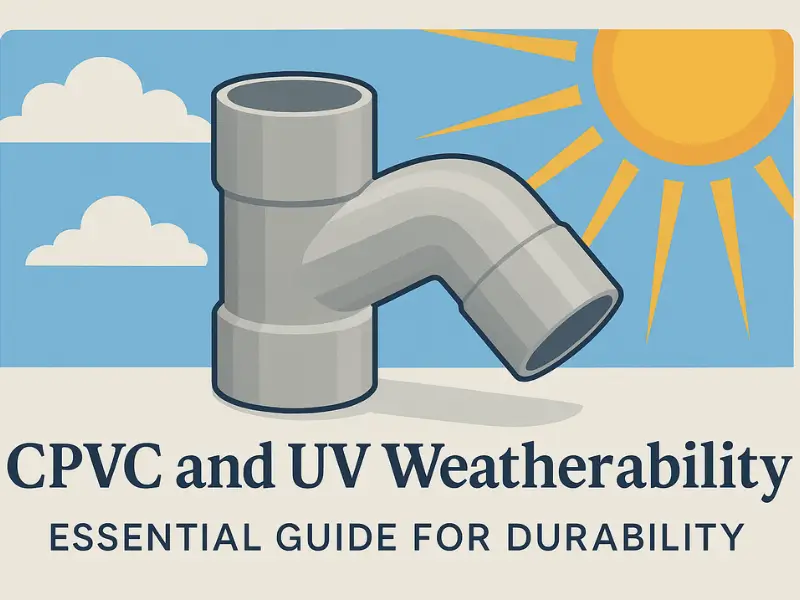
8. APPLICATIONS OF CPVC PIPES IN RESIDENTIAL PLUMBING
CPVC pipes play a significant role in residential plumbing systems. Ready for the good part? By using CPVC, homeowners gain access to efficient and reliable plumbing that supports both daily needs and special functions. For instance, CPVC is ideal for transporting hot water from the water heater to the various points of use throughout a home.
In addition to hot water lines, CPVC is effective in cold water distribution as well. Its thermal stability ensures that water remains at appropriate temperatures, preventing heat loss. For example, a modern home design in Colorado efficiently utilizes CPVC for kitchen and bathroom plumbing, resulting in a streamlined installation that reduces water waste and improves overall system performance.
Moreover, many new builds are increasingly incorporating CPVC for irrigation systems in gardens and landscaping projects. The lightweight nature of CPVC makes it easy to lay out these systems while ensuring they can handle the pressure requirements of water distribution.
Ultimately, the wide range of applications in residential settings highlights the practicality and efficiency of CPVC piping systems, providing homeowners with reliable plumbing solutions that meet modern demands.
| Application | Use Cases |
|---|---|
| Hot Water Systems | Supplying hot water to fixtures |
| Cold Water Distribution | Efficient cold water lines |
| Irrigation Systems | Garden and landscaping uses |
9. APPLICATIONS OF CPVC PIPES IN COMMERCIAL SETTINGS
Commercial settings increasingly employ CPVC piping systems due to their numerous advantages. But here’s the kicker: CPVC is especially valuable in environments where performance and reliability are paramount. For example, restaurants and cafeterias rely on efficient plumbing systems for water supply to kitchens and bathrooms.
Additionally, CPVC is used extensively in commercial buildings for HVAC applications. Its versatility allows for effective heating and cooling distribution across large facilities, contributing to better energy efficiency and comfort for occupants. An example of this is a corporate office building in New York that implemented CPVC in its HVAC system, resulting in reduced energy costs and improved climate control.
CPVC also shines in fire suppression systems. Many commercial buildings utilize CPVC for fire sprinkler installations, providing an effective firefighting measure while withstanding high temperatures. This has been increasingly popular in facilities like warehouses and manufacturing units.
The commercial application of CPVC not only enhances functionality but also ensures compliance with industry standards and regulations, making it a trusted choice for contractors and property managers alike.
| Commercial Application | Use Cases |
|---|---|
| HVAC Systems | Efficient heating and cooling |
| Fire Suppression Systems | Sprinkler installations |
| Food Service | Hot and cold water supply |
10. APPLICATIONS OF CPVC PIPES IN INDUSTRIAL USE
The industrial sector benefits hugely from the properties of CPVC, which adds unique value across various applications. What’s the real story? CPVC’s excellent resistance to chemicals and high temperatures makes it ideal for transporting aggressive substances.
In manufacturing facilities, CPVC is often used in chemical processing and waste management systems. For example, a chemical plant in Texas implemented CPVC piping to transport corrosive liquids safely, eliminating earlier problems experienced with metal pipes that were prone to leaks and corrosion.
Additionally, CPVC’s lightweight structure allows for easy installation in environments with complex piping layouts, minimizing labor costs. Successful integration of CPVC into factories involves significant cost savings over time as maintenance requirements decline.
Moreover, a notable case in the automotive industry showed how using CPVC for coolant transport systems led to improved reliability and reduced warranty claims. By moving to CPVC, the facility experienced fewer breakdowns, enhancing overall productivity on the production floor.
Ultimately, the applications of CPVC pipes in industrial settings illustrate their versatility and importance in maintaining efficiency and reducing costs.
| Industrial Application | Use Cases |
|---|---|
| Chemical Processing | Safe transportation of aggressive substances |
| Waste Management | Efficient and reliable disposal |
| Automotive Cooling Systems | Enhanced reliability and reduced claims |
11. INSTALLATION TECHNIQUES FOR CPVC PIPES
Installing CPVC pipes requires careful planning and execution. Ready for the good part? A successful installation hinges on following proper techniques and best practices to ensure long-lasting performance. First, proper cutting techniques are essential to achieve smooth edges and reliable connections. Using a pipe cutter specifically designed for CPVC ensures clean cuts that do not compromise the integrity of the material.
Next, the joining process through solvent welding should be executed precisely. Both surfaces must be cleaned and prepared with appropriate solvent cement before joining. This ensures a strong bond that can withstand pressure and temperature changes.
Finally, allowing sufficient curing time is essential before placing any load on the system. An overview of the approval standards for installations reveals that proper curing can prevent issues such as leaks, stress cracks, and joint failures.
Through a systematic approach, involving correct preparation, joining, and curing, contractors can significantly enhance the reliability of CPVC installations, leading to satisfied clients and reduced maintenance concerns in the long term.
| Step | Description |
|---|---|
| Cutting | Use pipe cutters for smooth edges |
| Joining | Employ solvent cement for secure connections |
| Curing | Allow for recommended curing time |
12. MAINTENANCE OF CPVC PIPES
Maintaining CPVC piping systems is integral to ensuring their long-lasting performance. What’s the real story? Regular maintenance extends the lifespan and efficiency of these installations. Inspecting CPVC systems periodically allows for early identification of potential issues, including visible wear or leaks.
Cleaning the pipes is also necessary. Over time, buildup may occur, and using mild cleaning agents will help preserve the integrity without damaging the material. Avoiding harsh chemicals that could degrade the pipe is important for prolonging lifespan.
In addition, addressing small repairs promptly can significantly reduce the likelihood of more severe problems occurring. Some contractors recommend a yearly inspection schedule to assess the pipes for any signs of trouble. A proactive maintenance strategy, including these inspections and routine cleaning, can help ensure that CPVC systems remain effective over the long haul.
Ultimately, taking these measured steps will help maintain the quality and efficiency of CPVC plumbing systems, providing peace of mind to homeowners and businesses alike.
| Maintenance Task | Importance |
|---|---|
| Regular Inspections | Identifies potential issues early |
| Cleaning | Prevents buildup and damage |
| Timely Repairs | Reduces risk of major failures |
13. FUTURE TRENDS IN CPVC TECHNOLOGY
As the demand for innovative materials in plumbing and construction grows, so do the advancements in CPVC technology. Ready for the good part? The future of CPVC piping looks promising, featuring improved formulations and applications that enhance performance and sustainability.
New technologies are being developed to improve the resistance of CPVC pipes to harsh chemicals and extreme temperatures, extending their range of use. Additionally, environmentally friendly manufacturing processes are gaining traction, reflecting a growing commitment to sustainability within the industry.
Furthermore, the integration of smart technology into plumbing systems is emerging. Sensors that monitor water pressure, temperature, and flow rates can provide real-time data, allowing for proactive maintenance and efficient operation. This evolution towards smart systems is likely to transform the way contractors approach installations and maintenance in the future.
Ultimately, understanding these trends will help stakeholders anticipate changes in the market and adapt accordingly, ensuring they remain competitive while providing superior service.
| Trend | Future Implications |
|---|---|
| Improved Materials | Enhanced chemical resistance |
| Sustainability Practices | Eco-friendly manufacturing processes |
| Smart Technology Integration | Real-time monitoring for efficiency |
14. COMMON MYTHS ABOUT CPVC PIPES
Many misconceptions surround CPVC piping, which can lead to hesitation in adopting it for various projects. But here’s the kicker: debunking these myths is crucial for making informed decisions. One common myth is that CPVC is not as strong as metal piping. In reality, CPVC is designed to handle significant pressure and heat, equating its reliability with that of metals in many scenarios.
Another myth suggests that CPVC is not suitable for outdoor applications. While it’s true that UV exposure can affect its longevity, using CPVC in shaded or protected areas significantly mitigates this risk. Moreover, recent innovations have led to CPVC formulations specifically designed for exterior installations, enhancing their durability against environmental factors.
Lastly, some believe that CPVC is not recyclable, contributing to waste issues. On the contrary, CPVC can be processed and recycled, allowing it to be part of sustainable construction practices.
Eliminating these myths helps potential users understand the value and efficiency of CPVC pipes, encouraging informed choices in material selection.
| Myth | Truth |
|---|---|
| Less Strength than Metal | CPVC can handle significant pressure and heat |
| Unsuitable for Outdoors | New formulations make it great for exterior use |
| Not Recyclable | CPVC can be recycled, supporting sustainability |
15. CONCLUSION: THE FUTURE OF CPVC IN PLUMBING AND CONSTRUCTION
In conclusion, CPVC pipes offer six major advantages and various applications that enhance plumbing systems across residential, commercial, and industrial settings. Their corrosion resistance, high temperature tolerance, cost-effectiveness, lightweight nature, versatility, and environmentally friendly properties make them an ideal choice for modern construction.
As the industry continues to evolve, so too do the technologies and applications surrounding CPVC. Embracing these advancements and understanding the benefits can lead to improved efficiency and sustainability in plumbing systems.
Looking forward, stakeholders in the construction and plumbing industry must consider the immense potential embedded within CPVC materials. By leveraging this knowledge, they can make decisions that not only benefit their immediate projects but also contribute positively to the environment.
FAQ SECTION
Q1: What are CPVC pipes?
CPVC pipes are thermoplastic pipes made from chlorinated polyvinyl chloride, primarily used in plumbing and construction due to their durability and resistance to heat and corrosion.
Q2: How does CPVC compare to other piping materials?
CPVC provides superior resistance to corrosion and wear compared to metals, along with a higher tolerance for temperature variations, making it a reliable choice for various applications.
Q3: What are the common applications for CPVC pipes?
CPVC is widely used for residential hot and cold water systems, commercial HVAC applications, fire sprinkler systems, and industrial transport of chemicals.
Q4: How does one properly maintain CPVC piping systems?
Regular inspections for leaks, periodic cleaning with mild agents, and prompt repairs are essential for maintaining the performance and longevity of CPVC pipes.
Q5: What advancements are being made in CPVC technology?
Current trends involve improved material formulations for enhanced durability, environmentally sustainable manufacturing processes, and the integration of smart technologies for better monitoring and maintenance.

